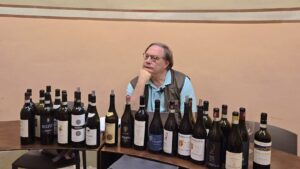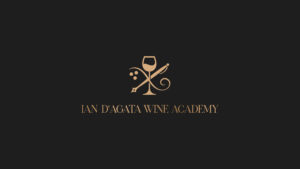Long celebrated for its powerful, world-class red wines, Paso Robles is now quietly gaining recognition for something unexpected: its ability to produce compelling and distinctive white wines. As global demand surges for crisp, food-friendly whites, a growing number of dedicated producers are turning their attention to heat-tolerant Mediterranean and Rhône varieties that thrive in Paso’s sun-drenched vineyards and limestone-rich soils. The results are impressive—wines that combine freshness, texture, and aromatic complexity, reflecting a region in the midst of a stylistic evolution.
White Wine Trends in Paso Robles and Beyond
The global wine market is experiencing a renaissance of lighter, high-acidity white wines that pair effortlessly with food and are increasingly enjoyed year-round. Varieties such as Vermentino, Grenache Blanc, and Picpoul Blanc are gaining traction for their refreshing profiles and adaptability to warm climates. Recent market reports suggest that white wine sales are on the rise as consumers seek out alternatives to fuller-bodied reds, especially in regions where warm weather dominates much of the year.
Paso Robles is well-positioned to capitalize on this shift, offering characterful, value-driven wines that increasingly rival those from more established coastal areas such as Napa Valley and Sonoma. Still, the region must overcome its entrenched identity as a red wine powerhouse, shaped by robust Zinfandels and Rhône-style blends. White wines remain a relatively small segment, but events like the Paso Robles White Wine Invitational are helping reshape perceptions by giving producers a platform to showcase their work. Through a focus on Mediterranean varieties and innovative blending, Paso is carving out a new niche—one that appeals to both discerning wine enthusiasts and curious consumers alike.
Grape Varieties Shining in Paso Robles
Vermentino is emerging as one of Paso’s most promising white grapes. Crisp acidity, citrus zest, and herbal nuances define its profile, well-matched to a climate of hot summer days and cool evenings. Wines from Vermentino here are typically bright and saline, evoking Ligurian or Corsican whites but with a touch more sunshine-derived ripeness and breadth.
Grenache Blanc also shines, producing floral, stone-fruited wines with impressive vibrancy and phenolic structure. Its versatility makes it equally successful as a single-varietal wine or a blending component.
Though still rare in California, Clairette Blanche is gaining a foothold thanks to its delicate floral profile, savory notes, and balanced palate—even in warm vintages. Picpoul Blanc, prized for its electric acidity and citrus snap, contributes lift and precision to both varietal bottlings and blends. Trebbiano Toscano, labeled as Ugni Blanc at Paix Sur Terre, brings subtle orchard fruit and a linear framework that adds delicacy and transparency.
Southern Italian grapes are also making an impression. Fiano, with its textured mouthfeel and aromas of hazelnut, apricot, and wild herbs, pairs beautifully with Paso’s limestone soils. Greco offers more structure and acidity, often marked by flinty minerality and stone fruit, and Falanghina (exactly which one of the two Falanghina varieties, Flegrea and Beneventana, was planted is not always known) with tons of floral charm. Roussanne, a longtime staple in Paso blends, continues to captivate with its beeswax richness, chamomile aromatics, and impressive aging potential.
These varieties not only withstand Paso’s intense summer heat but also achieve phenolic ripeness while maintaining acidity—crucial attributes in this Mediterranean-like climate. Together, they are shaping Paso’s emerging identity in white wine production.
A Culture of Blending and Innovation
Paso Robles winemakers are unburdened by tradition when it comes to white wine—an open-mindedness that has encouraged experimentation and originality. Rhône-style blends featuring Grenache Blanc, Roussanne, Viognier, Marsanne, and Clairette Blanche are being joined by the lesser-known but highly promising Bourboulenc (thanks to the pioneering work of Tablas Creek), a variety that brings herbal lift and bright citrus energy.
More unexpectedly, some of the most exciting white wines in the region come from avant-garde blends that fall outside classical templates. Monochrome Wines, for instance, produces a distinctive cuvée combining Gewürztraminer, Albariño, and Sauvignon Blanc, sourced partly from cooler coastal vineyards. The result is a texturally complex, aromatic wine with precision, minerality, and grip.
These blends are not mere novelties; they represent a genuine exploration of Paso’s capacity to produce layered, balanced whites from a diversity of sites and grapes. With a wide array of microclimates and soil types, Paso offers producers a rich palette to work from—yielding wines that range from taut and saline to lush and waxy.
Standout Producers and Their White Wine Programs
Monochrome Wines and Paix Sur Terre deserve special mention for their standout bottlings and distinct approaches. Monochrome’s wines are eccentric, squeaky clean, and feel almost mad-scientist in their precision—blends that are unconventional, cerebral, and texturally compelling. Paix Sur Terre, by contrast, takes a more traditional path, producing mostly mono-varietal wines that are clean, complex, and resolutely food-friendly, often showcasing a mineral drive.
Rava Wines demonstrated that high-quality sparkling wines are not only possible but already a reality in Paso Robles. Their commitment to méthode traditionnelle bottlings underscores the region’s diversity and evolving potential.
Other highlights included Lone Madrone, which poured a charming, uncomplicated Melon de Bourgogne and a bright, surprisingly expressive Greco—both lovely examples of lesser-seen whites in California. iiwii (It Is What It Is) emerged as one of the surprises of the day, with a lineup of Rhône whites that were nothing short of phenomenal—some of the most exciting wines of the tasting. Barton Family Wines impressed with an exotic and vibrant Greco that was simply not to be missed, while Rococo Wines showcased the incredible range of Chenin Blanc through four stylistically distinct expressions, each revealing a different facet of the grape’s potential.
Giornata, based in Tin City, remains one of California’s foremost champions of Italian white varieties. Their bottlings of Fiano, Vermentino and the “Il Campo Bianco”, a blend of Vermentino, Falanghina and Trebbiano Toscano, show admirable restraint and precision, with a clear focus on food compatibility and minimal intervention. Nearby, Union Sacré offered a more playful and modern perspective. Wines like the Pinot Blanc and Riesling from the cooler coast, delivered energy and finesse with a balanced interplay of creaminess and citrus-driven freshness.
Kinero Cellars, the project of Anthony Yount, continues to be one of Paso’s most consistent and compelling white wine producers. His small-lot bottlings of Grenache Blanc, Roussanne, and Sauvignon Blanc often combine power with poise, showing depth, minerality, and quiet complexity.
In ultimate analysis, Paso Robles may not be the first name that comes to mind when thinking of California white wine—but perhaps it should be. With thoughtful vineyard sourcing, heat-adapted varieties, and a culture of fearless blending, Paso’s whites are now standing shoulder to shoulder with those from the coast. Add to that a remarkably favorable price-quality ratio, and Paso Robles emerges as an exciting region for white wine.
The Paso Robles White Wine Invitational, beautifully hosted and flawlessly organized by Rava Wines, made this evolution tangible. I, for one, am already looking forward to what next year’s event will bring.




